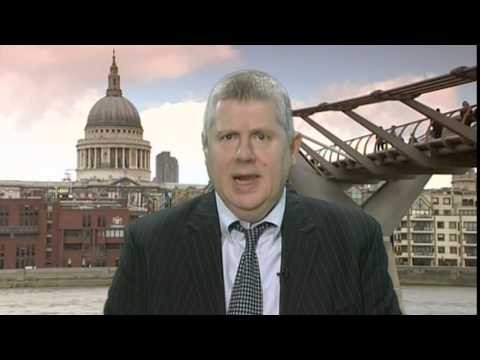Deflation fears could still overwhelm the risk of inflation
Post on: 16 Март, 2015 No Comment

Continuing declines in inflation rates may reinforce deflationary psychology.
Fabian de Beer | @Moneyweb  | 19 February 2015 11:40
Deflation is a contraction in the volume of money and credit relative to available goods and services.
At the start of 2014, most investors were forecasting stronger global demand and rising bond yields. A number of market participants even anticipated that inflation would surprise on the upside. Instead, bond yields have fallen and the threat of sustained low inflation, if not deflation, has emerged.
This is despite unprecedented fiscal and monetary stimulus and a Fed Funds rate that has remained round the zero-bound since December 2008. Whereas central banks will be doing their utmost to prevent deflation in the months ahead, it remains to be seen whether they will be successful. The US economy which is generally expected to perform better than most may aid global growth or risks being dragged down by weakness elsewhere. If US growth flags, it runs the risk of being pulled along into a deflationary scenario. And so 2015 may be another year of weak global growth where deflation fears could overwhelm the risk of inflation.
Deflation is essentially a symptom of the underlying problem. The reality is that most economies are battling high (and rising) debt levels. Not to mention ageing populations and weak growth, which will make it even harder if not impossible to pay outstanding debts. This enormous debt burden is having a debilitating effect on the demand side of the economy.
Impact of the oil price drop
The collapse in energy prices, oil specifically, has compounded the situation. The Organisation of Petroleum Exporting Countries (OPEC)s failure to negotiate a cutback in oil production set in motion dramatic further declines in prices which in turn compelled producers to increase supplies in an attempt to sustain revenues. Furthermore, geopolitical and competitive motives accompanied the decision, leaving a big question mark over the continued relevance of OPEC. Given fragile global growth and commodity price declines, a reduction in longer-term inflation expectations has been the result. This challenges the credibility of central banks that are already battling to meet their inflation objectives, despite extraordinary stimulus measures.
There is a real danger of second-round effects from the slump in oil prices and that deflation fears will become more widespread in 2015. Continuing declines in inflation rates may promote and reinforce deflationary psychology. The euro area seems particularly vulnerable because it has faced speculation about deflation for more than two years. This is a much more significant threat in the euro area than in the US, because the economy has no real momentum and unemployment remains stuck at record levels. Euro-area inflation expectations were on the slide even before the collapse in energy prices, a trend that the latest developments have certainly reinforced. In a concerted move to prevent an entrenchment of a deflationary scenario in the euro-zone, the European Central Bank (ECB) recently announced quantitative easing (QE) measures that surprised on the upside of market expectations. While the market reacted positively to this announcement, the question remains whether or not this renewed and enlarged stimulus programme will ultimately have the desired impact and outcome.
Another year of weak global growth coupled with ongoing declines in commodity prices will clearly be deflationary, especially as many parts of the world are sitting with excess capacity. A deflationary trend would cause real rates to rise. This development is particularly daunting considering that rising real rates and slowing nominal GDP growth imply that debt to GDP will likely continue to rise.
Given this background, central banks will be compelled to maintain easy monetary policies for longer, if not indefinitely. Policymakers in a number of countries may attempt to revive their economies through currency devaluation and other reflationary measures, even more QE. The Bank of Japan is already engaged in large-scale QE and the ECB has now joined in with its own programme of government bond purchases, both in an attempt to engineer a weaker currency and forestall deflation. Chances are that countries like China may join them in devaluing their currency. Chinas economic fortunes have recently shifted: producer prices decreased 3.3 % in December of 2014 (see graph below) and the country has been registering declining economic growth. Japans ruthless attempt to export deflation, aside from largely failing to generate either inflation or strong domestic demand, is putting pressure on others. Such developments could spark a currency war as other countries (notably other emerging markets) react to maintain competitiveness.
All such reflationary efforts will involve significant monetary (quantitative) easing. Monetary expansion could lift asset prices, especially equity markets, and hopefully confidence. A combination of falling oil and commodity prices, low interest rates and aggressive monetary easing may provide an uplift to global economic growth. If this transpires, will this growth be sustainable or would it fizzle out too?
Financial markets and QE

Financial markets have largely been the beneficiaries of quantitative easing, in fact they have become addicted to it. Every reason for the market to rally can to some extent be pinned on some anticipated stimulus. When the injection fades, markets anticipate another round of stimulus as central banks are damned if they do not, especially given the challenges they face and notably deflation. On the other hand if the economy picks up nicely, such as the US did during the second half of 2014, markets believe a virtuous growth cycle has taken root and rally. Policymakers have essentially provided a hedge to negative outcomes.
The deflationary spectre that looms as we enter 2015 will again raise questions about QE. One is whether continued easing efforts will work, because the weight of a reversal in asset prices would be far larger than any asset purchase or interest rate reduction that central banks could undertake. While QE has been good, it is always the unknown and unintended ramifications that come back to bite such an endeavour. It may be wise to pause and ask whether the decline in commodity prices is heralding a decline in financial markets.
In conclusion, the fact that central banks have managed to inflate financial asset prices does not mean they have prevented deflation. Whether they will win or lose this battle will make all the difference to the financial markets. Risky asset prices will collapse if they do not. If this unprecedented grand experiment of QE ultimately fails, policymakers may no longer have the means to intervene effectively; they would have run out of policy bullets. Asset prices around the globe might continue higher as long as the belief holds that central banks are in control. If the investor community starts losing confidence in central banks to aid the current malaise, it will spell trouble.
The following graphs provide a picture of low inflation tendencies in the world.
20inflation.jpg?5282b5 /%
20inflation.jpg?5282b5 /%
Fabian de Beer is Chief Investment Officer of Mergence Investment Managers.














